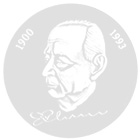Invention of the erbium-doped fibre amplifier (EDFA)
The Invention of the Erbium-doped Fibre Amplifier (EDFA)
Prof. Payne invented the erbium-doped fibre amplifier (EDFA), a device in the core of the optical data transmission systems enabling data rates over long distances at rates previously unimaginable. Professor Payne’s pioneering work formed the basis of this technological breakthrough. Based on his results, systems have been developed which enable the transmission of optical signals in fibres over hundreds of kilometres at data rates of more thanhundred gigabit per second.
Whithout the enormous transmission bandwidth provided by modern telecommunication networks, the growth of the Internet throughout the last years would have been impossible. The invention of the erbium-doped fibre amplifier (EDFA) in 1987 was one of the significant teps in the evolution of these networks.
The erbium-doped fibre amplifier consists of an erbium-doped glass fibre, typically 10-30 m long, into which one or more data signals and the light of pump laser used for amplification are fed in. Due to the specific properties of the glass fibre, the data signals are being amplified by absorbing the power of the pumped laser along the fibre. Today, erbium-doped fibre amplifiers are depolyed in the global telecommunication network with amplification factors of up to 40 dB (a factor of 10000) and noise figures of less than 4 dB.
The introduction of the single mode fibre allowed in a first step to increase the data rate in optical telecommunication networks from some megabit per second up to a few hundred gigabit per second and at the same time enabled a massive cost reduction by increasing the possible minimum distance between regenrators from a few kilometres up to over one hundred kilometres. By using the erbium-doped fibre amplifier, which today is deployed almost all over the world, the possible distance between regernerators could be increased even further, now up to ten thousand kilometres. The first results of the work of Prof. Payne were published 1987; at about the same time Dr.Emmanuel Desurvire had worked independently on the ame topic, Prof. Payne concentrating on the basic physical effects and Dr. Emmanuel Desurvire focussing on the application aspects.
The Eduard-Rhein-Award honours the outstanding contributions of Prof. Payne on active fibre devices with specitic consideration of his pioneering work on the erbium-doped fibre amplifier.
Dr. Söhne Mehrgardt,
INFINEON TECHNOLOGIES
